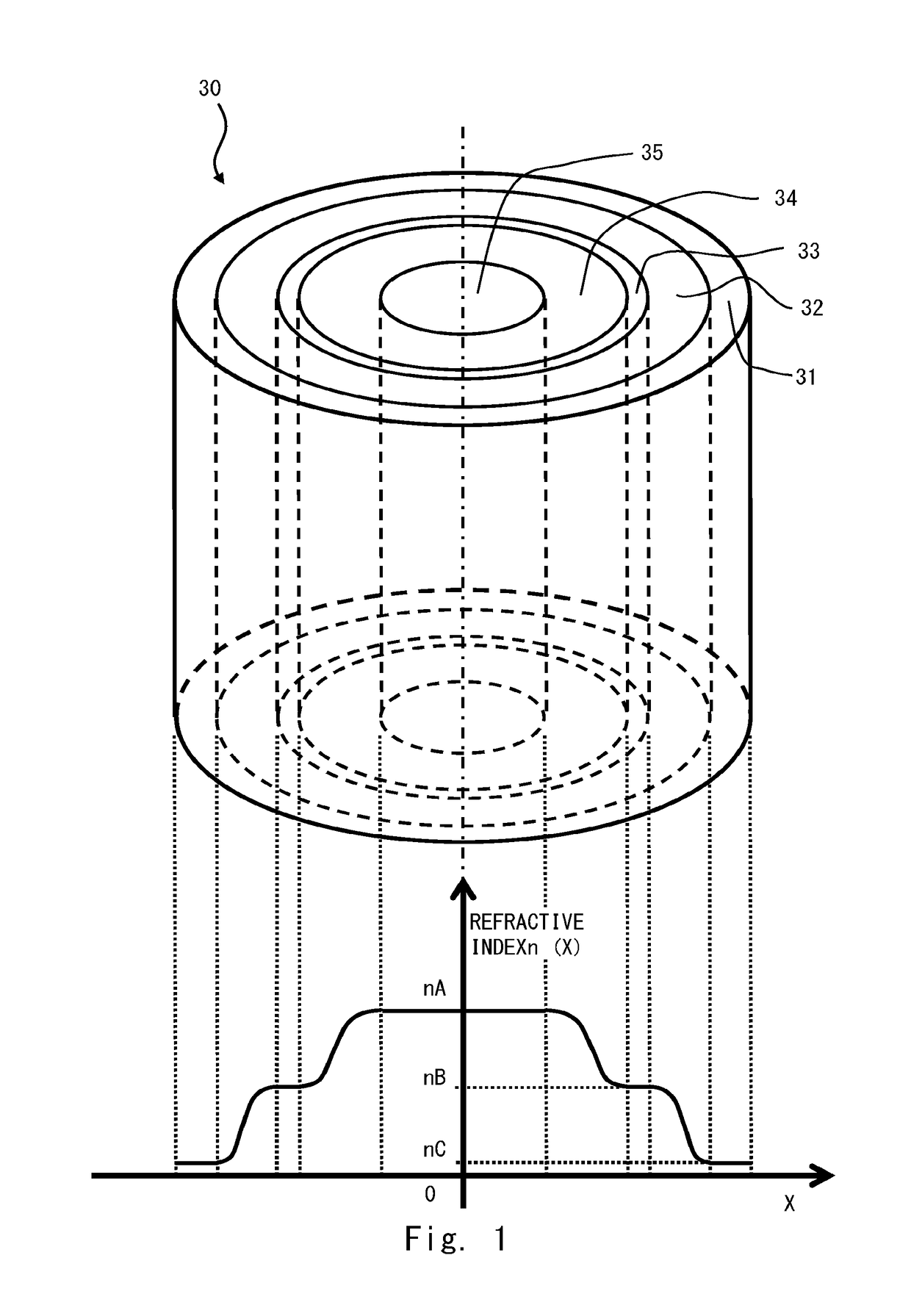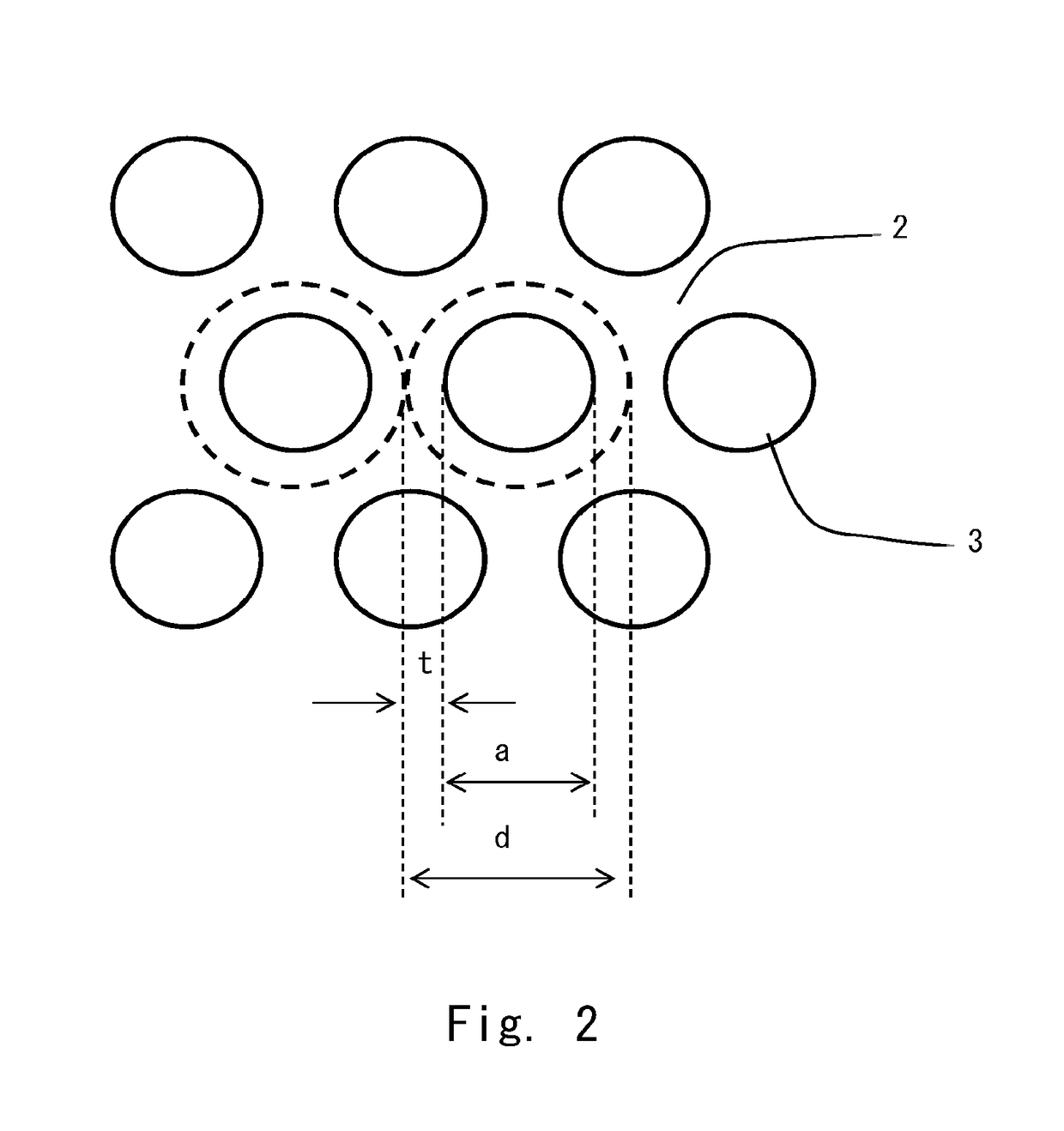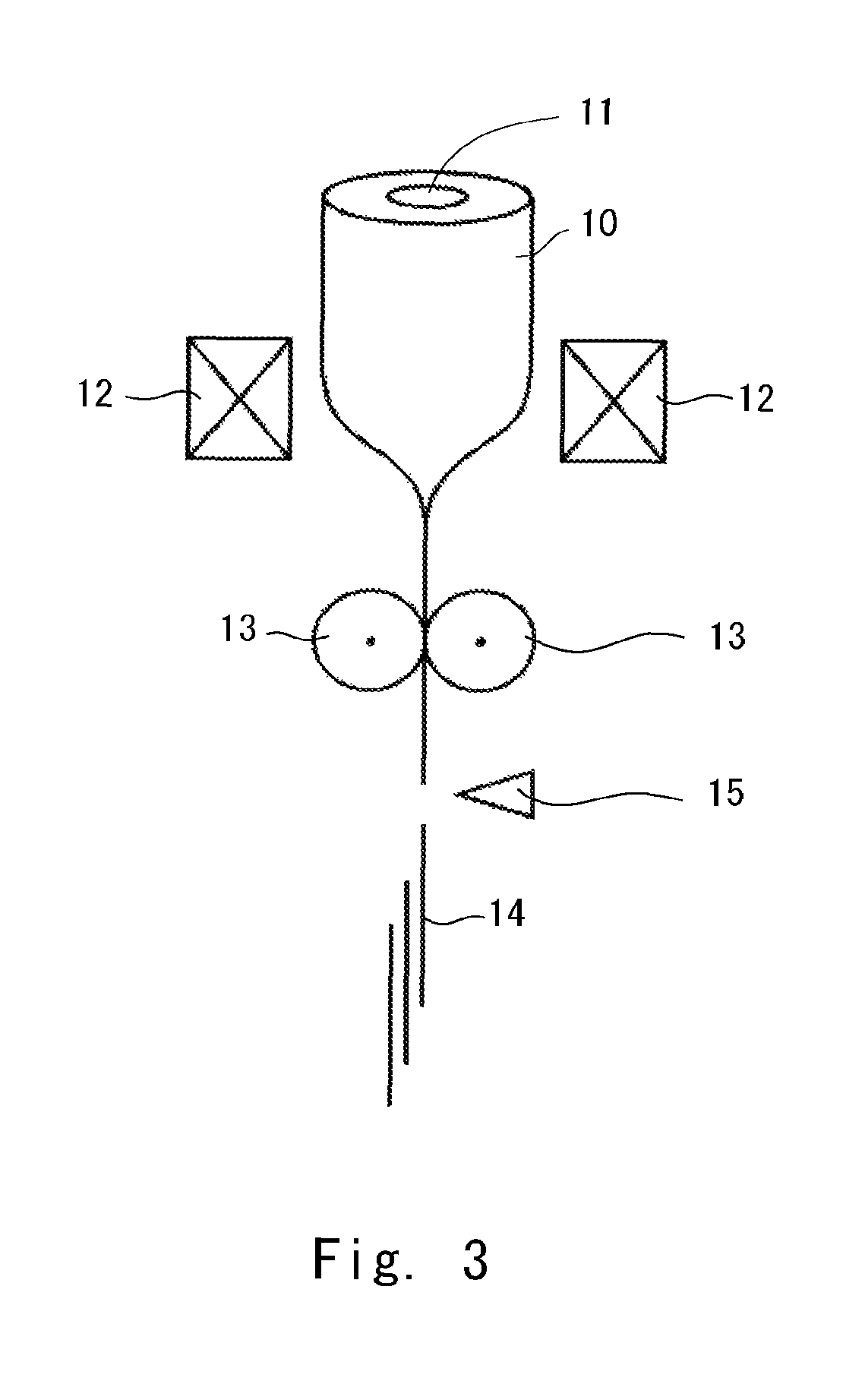Optical fiber rod, optical fiber, image fiber, and method for manufacturing optical fiber rod
a technology of optical fiber and optical fiber rod, which is applied in the direction of manufacturing tools, cladding optical fiber, instruments, etc., can solve the problems of reducing the adhesion between reducing the adhesion of the core and the cladding, and reducing the optical transmission loss. , to achieve the effect of small optical transmission loss and large refractive index
- Summary
- Abstract
- Description
- Claims
- Application Information
AI Technical Summary
Benefits of technology
Problems solved by technology
Method used
Image
Examples
first embodiment
[First Embodiment]
[0029]Embodiments of the present invention are described hereinafter with reference to the drawings.
[0030]FIG. 1 is a view showing an example of the structure and the refractive index of each region of an optical fiber rod 30 according to this embodiment. The measurements shown in FIG. 1 do not always coincide with the scale of the rod 30 according to this embodiment. As shown in FIG. 1, the optical fiber rod 30 according to this embodiment includes a center region 35, a first copolymer region 34, an intermediate region 33, a second copolymer region 32, and an outer region 31.
[0031]The refractive index decreases in the order: the center region 35>the first copolymer region 34>the intermediate region 33>the second copolymer region 32>the outer region 31. The refractive index of the center region 35, the intermediate region 33 and the outer region 31 is uniform in each region. On the other hand, the refractive index of the first copolymer region 34 and the second cop...
example 1
[0085]A glass cylindrical container (with an inside diameter of 100 mm) was placed horizontally in an air thermostat bath at a temperature of 70° C. The cylindrical container rotated (500 turns per minute). The rotational axis and the central axis of the cylindrical container coincided. Under such conditions, a mixture was injected through an inlet at one end of the cylindrical container in the length direction. This mixture was a mixture of a polymerization initiator, a chain transfer agent for molecular weight regulation, and a low refractive index monomer (2,2,3,3-tetrafluoropropyl methacrylate: the refractive index of the polymer was 1.422).
[0086]The rate of injection of the mixture was adjusted so that the rate of deposition of a polymer was 1 mm per hour. After injection, the cylindrical container continued to rotate for three hours. After that, heating (at a temperature of 120° C. for three hours) was done. As a result, the outer region 31 made of a polymer produced only from...
PUM
| Property | Measurement | Unit |
|---|---|---|
| diameter | aaaaa | aaaaa |
| diameter | aaaaa | aaaaa |
| diameter | aaaaa | aaaaa |
Abstract
Description
Claims
Application Information
 Login to View More
Login to View More - R&D
- Intellectual Property
- Life Sciences
- Materials
- Tech Scout
- Unparalleled Data Quality
- Higher Quality Content
- 60% Fewer Hallucinations
Browse by: Latest US Patents, China's latest patents, Technical Efficacy Thesaurus, Application Domain, Technology Topic, Popular Technical Reports.
© 2025 PatSnap. All rights reserved.Legal|Privacy policy|Modern Slavery Act Transparency Statement|Sitemap|About US| Contact US: help@patsnap.com



